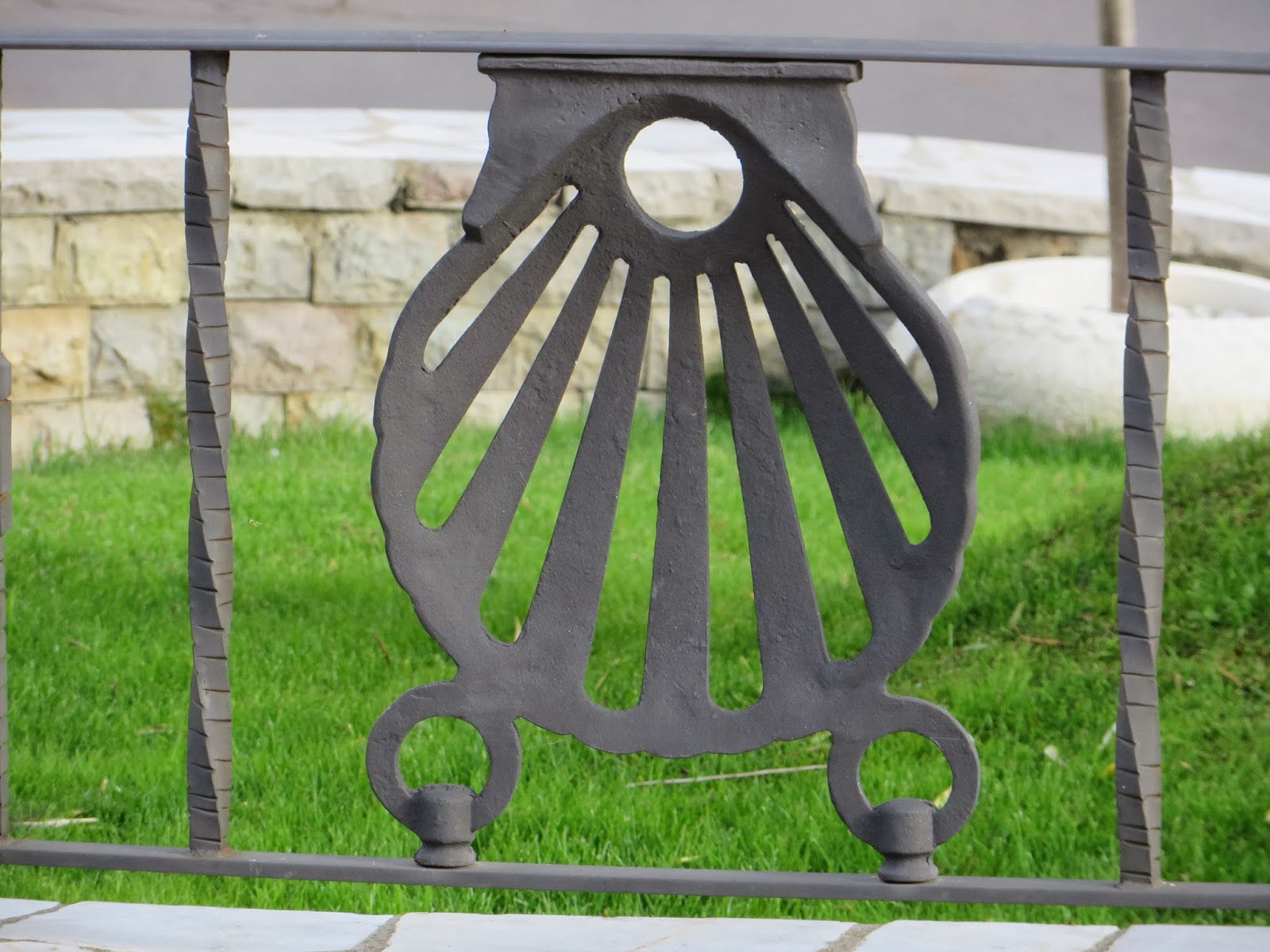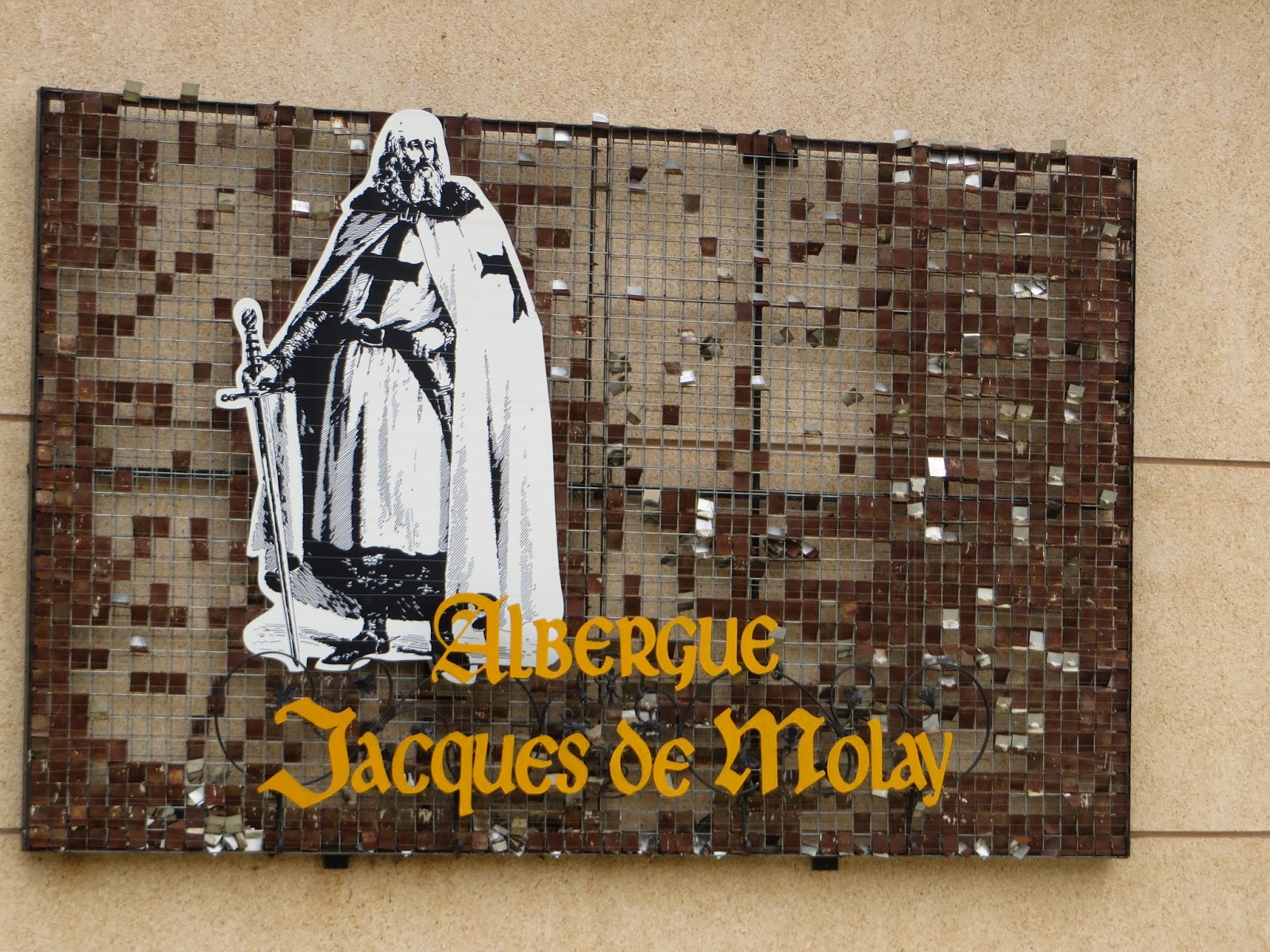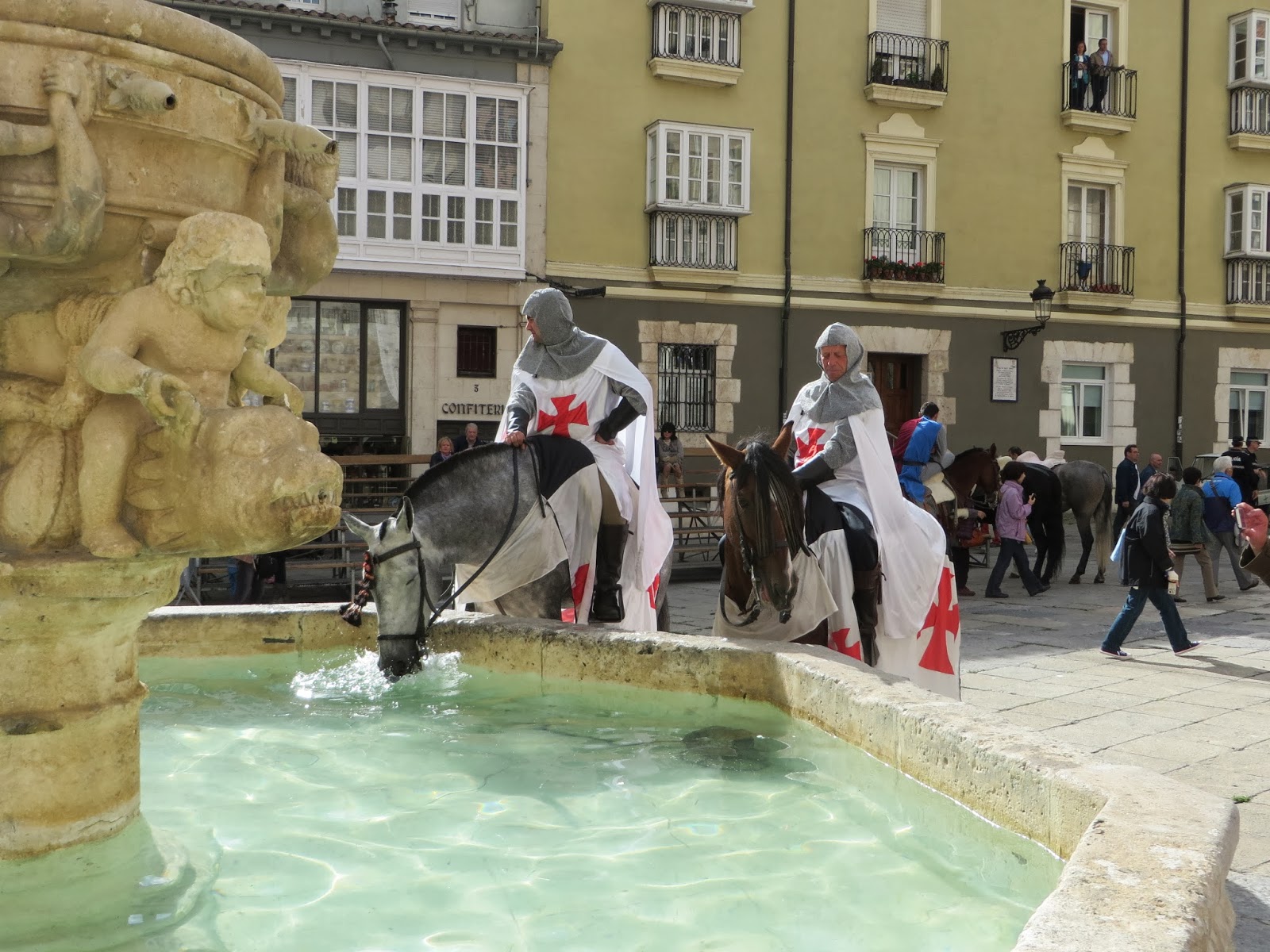Scallop Shells, Statues & Other Symbols
The scallop shell has long been the key symbol of the Camino and over the centuries apparently has taken on various meanings. Most pilgrims, particularly those walking, have a scallop shell attached to their backpack and then take it home as a souvenir. As a metaphor, the grooves or lines in the shell, which meet at a point, symbolize the various pilgrimage routes that eventually meet at the same desitnation - Santiago de Compostela. In the distant past, the shells served practical purposes for gathering water to drink, scooping food or even as a bowl from which to eat.
The scallop shell symbol is seen along the entire route and displayed in a myriad of ways as can be seen in the photos. In some towns/villages, the symbol is embedded into streets, sewer covers or posts. Some homeowners display the symbol at the entrance to their house, on fences or walls. The shell is incorporated into many of the signs and directional markers. Depictions of St. James often have him wearing a hat with a scallop shell on the front.
Another symbol seen quite often on the Camino are statues depicting St. James; possibly all pilgrims. From what I have read, it seems these are more likely to symbolize the apostle than pilgrims generally. There are some modern depictions that are quite interesting and certainly contrast with the more traditional approach. One of the things that stands out to me is that today's "real" pilgrim certainly has clothing and gear that would be a lot lighter and seemingly better suited to the journey than what was used by the earlier pilgrims.
There are a few other symbols seen on the Camino that stand out even though they are not as frequently seen as the scallop shell. One symbol is the Cross of Santiago that simulates a cross and sword with three lilies on the arms and grip. Apparently, it symbolizes the chivalrous character of St. James on his journey of martyrdom. The Cross of Santiago is painted on many of the scallop shells and can be seen in other applications.
Another symbol associated with the pilgrimage is a gourd, which served as a container to carry water in medieval times. Many depictions of St. James include the scallop shell, Cross of Santiago, a gourd and a walking stick together.
Roman Influences
As one would expect, there is much evidence of Roman influence throughout most of the Camino and is especially the case in the construction of roads and bridges. I don't know the details about this aspect of Spanish history, so will let a few pictures illustrate some of the Romanesque structures we saw.
Knights Templar
In the period of the 12th to 14th century, Santiago de Compostela grew in importance as a destination for pilgrims, supposedly even eclipsing the importance of Rome as a destination. The increased importance of the route during and after the Crusades was accompanied by the rise of various religious and chivalrous orders dedicated to the protection of pilgrims and furthering the aim of re-establishing Christianity. One of those orders was the Knights Templar (Templars); a group of wealthy knights known for having mysterious initiation rituals. As the order grew in power and importance, it was perceived by the Papacy and Catholic monarchs as a threat to their power.
On October 13, 1307 (a Friday), the joint forces of Pope Gregory and King Philip of France arrested a majority of the knights and the Grand Master of the Order Jacques de Molay. Subsequently, they were put to death and the order was disbanded a few years later. While not widespread, there are places on the Camino where the Templars are profiled. This is a fascinating part of the Camino's history that warrants more research.
While not directly related to the Templars, our break day in Burgos occurred during a medieval festival in the city. There were many people dressed in period clothing and participating in various activities such as archery competitions. A symbol seen on the medieval clothing worn by some men (knights) was a red cross that is associated with the Knights Templar.
The scallop shell has long been the key symbol of the Camino and over the centuries apparently has taken on various meanings. Most pilgrims, particularly those walking, have a scallop shell attached to their backpack and then take it home as a souvenir. As a metaphor, the grooves or lines in the shell, which meet at a point, symbolize the various pilgrimage routes that eventually meet at the same desitnation - Santiago de Compostela. In the distant past, the shells served practical purposes for gathering water to drink, scooping food or even as a bowl from which to eat.
The scallop shell symbol is seen along the entire route and displayed in a myriad of ways as can be seen in the photos. In some towns/villages, the symbol is embedded into streets, sewer covers or posts. Some homeowners display the symbol at the entrance to their house, on fences or walls. The shell is incorporated into many of the signs and directional markers. Depictions of St. James often have him wearing a hat with a scallop shell on the front.
Another symbol associated with the pilgrimage is a gourd, which served as a container to carry water in medieval times. Many depictions of St. James include the scallop shell, Cross of Santiago, a gourd and a walking stick together.
As one would expect, there is much evidence of Roman influence throughout most of the Camino and is especially the case in the construction of roads and bridges. I don't know the details about this aspect of Spanish history, so will let a few pictures illustrate some of the Romanesque structures we saw.
Knights Templar
In the period of the 12th to 14th century, Santiago de Compostela grew in importance as a destination for pilgrims, supposedly even eclipsing the importance of Rome as a destination. The increased importance of the route during and after the Crusades was accompanied by the rise of various religious and chivalrous orders dedicated to the protection of pilgrims and furthering the aim of re-establishing Christianity. One of those orders was the Knights Templar (Templars); a group of wealthy knights known for having mysterious initiation rituals. As the order grew in power and importance, it was perceived by the Papacy and Catholic monarchs as a threat to their power.
On October 13, 1307 (a Friday), the joint forces of Pope Gregory and King Philip of France arrested a majority of the knights and the Grand Master of the Order Jacques de Molay. Subsequently, they were put to death and the order was disbanded a few years later. While not widespread, there are places on the Camino where the Templars are profiled. This is a fascinating part of the Camino's history that warrants more research.
While not directly related to the Templars, our break day in Burgos occurred during a medieval festival in the city. There were many people dressed in period clothing and participating in various activities such as archery competitions. A symbol seen on the medieval clothing worn by some men (knights) was a red cross that is associated with the Knights Templar.


















































No comments:
Post a Comment